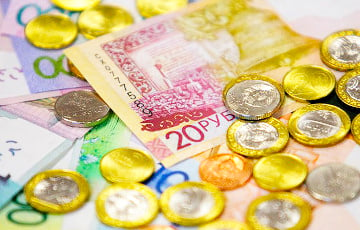Devaluation Hits Belarusian Сonsumers?
1- 30.03.2021, 9:19
- 4,406

The volume of retail sales in the country has been falling for four months in a row.
Retail sales in Belarus have been falling for the fourth month in a row. In November 2020, the turnover fell by 0.9%, while in December 2020 - by 0.1%, in January 2021 - again by 0.9%. In February, the decline amounted to 6.2%, reports banki24.by.
In the Vitsebsk region, the situation is even worse. If we ignore July 2020, when the turnover increased there by 0.02%, the sales in the northern region have not been growing since last April.
According to statistical data, real incomes and wages of Belarusians grew in 2020 and continue to grow in 2021. It means the main reason is not a decline in living standards, but something else.
The coronavirus epidemic and the factor of a high comparison base fit the role of "something else" perfectly. The current wave of decline in trade turnover coincided with the second wave of the epidemic. Belarusians more often tend to buy via online delivery services rather than by visiting regular stores and shopping centres.
In February, there was a pronounced influence of the calendar. Last year was a leap year, and February had 29 days. It alone will result in a 3.4-3.5% decrease in retail sales when comparing 2020 and 2021.
Also, in February-March 2020, there was a consumer boom associated with the devaluation of the Belarusian ruble. In March 2020, sales increased by 8.8%, while in March 2020 - by 10.5%.
According to the Belarusian tradition, non-food products were the driver of the last year. It is easier to hedge risks from devaluation with them: non-food items are stored for a long time, more expensive than food and liquid for resale. In February 2020, the turnover of non-goods increased by 8.7%; in March - by 14.1%.
In April, a decline in consumer activity followed. It was associated with the beginning of the epidemic and the end of the spring depreciation of the Belarusian ruble. Therefore, in April-May 2021, we can expect the trade indicators to improve - just at the expense of the fall in 2020.
At the regional cross-section, the picture is as follows. In the Brest region, the trade turnover for two months decreased by 4.1%, in Vitsebsk - by 4.5%, Homel region - by 2.6%, Hrodna region - by 4.2%, Mogilev region - by 2.1% and in Minsk - by 4.5%. Only the Minsk region had a slight increase in 2020 - by 0.3%.
In the regions, the border areas suffered the most. It is due to covid-related suppression of tourism and transit through the territory of Belarus.
For example, Brest (minus 26.8%), Kamenets (minus 18.6%) and Malaryta (minus 33.9%) districts of the Brest region suffered the most; while in the Vitsebsk regions suffered Braslau (minus 19.1%), Verhnedvinsk (minus 12.1%) and the Vitsebsk region (minus 18.6%); the Homel region - Homel (minus 17.9%); the Hrodna region - Berestovitsy (minus 38.4%), Voranava (minus 35.6%), Hrodna (minus 29.3%), Astrovets (minus 21%) and Oshmyany (minus 16.4%).








